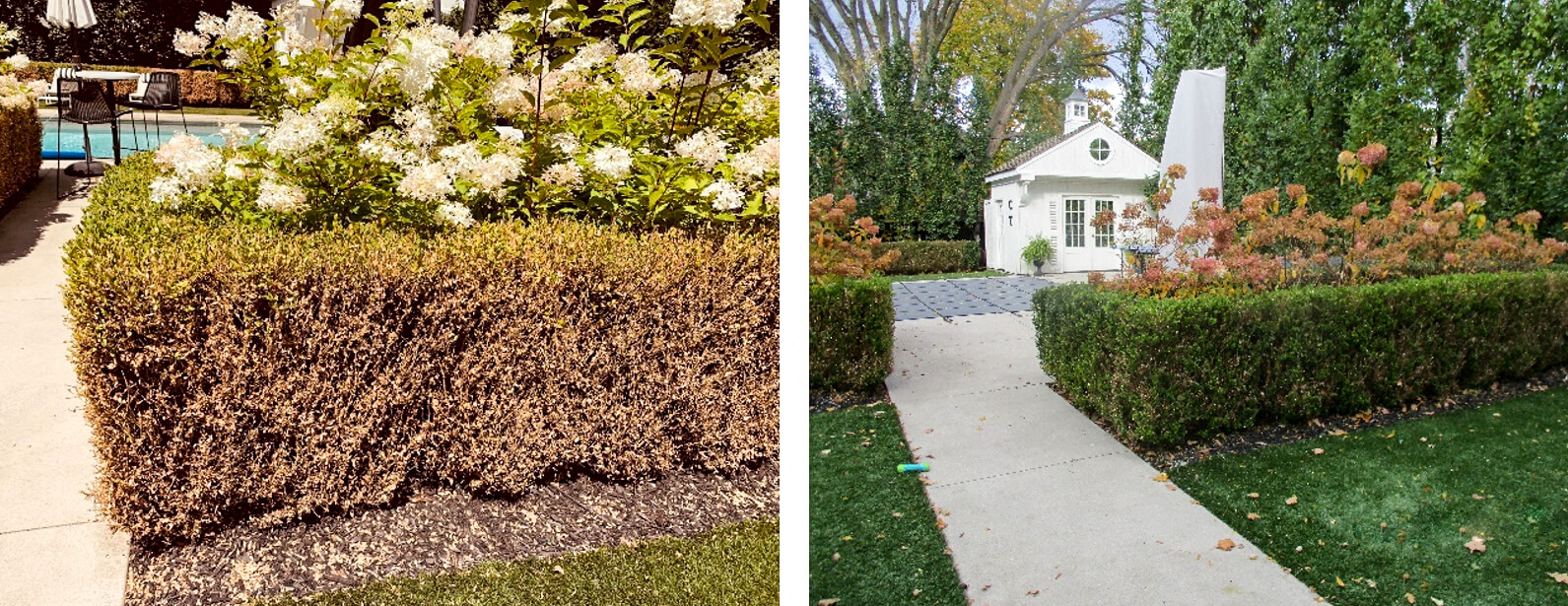August 28, 2020

A boxwood hedge before and after treatment.
Rejuvenating boxwood plants damaged by box tree moth
Box tree moth (Cydalima perspectalis) is an invasive pest found in urban landscapes within the Greater Toronto Area that selectively feeds on boxwood shrubs. High populations of box tree moth caterpillar may defoliate boxwood plants; in some severe cases this can result in plant dieback. However, most affected plants will still have healthy stems and roots, and the boxwood plant will leaf out and regrow if you follow these steps:
Step 1: Monitor
Monitor boxwood plants for caterpillars from May to August. For what to look for, read: Box tree moth look for these signs this spring.Report any new sightings of box tree moth.